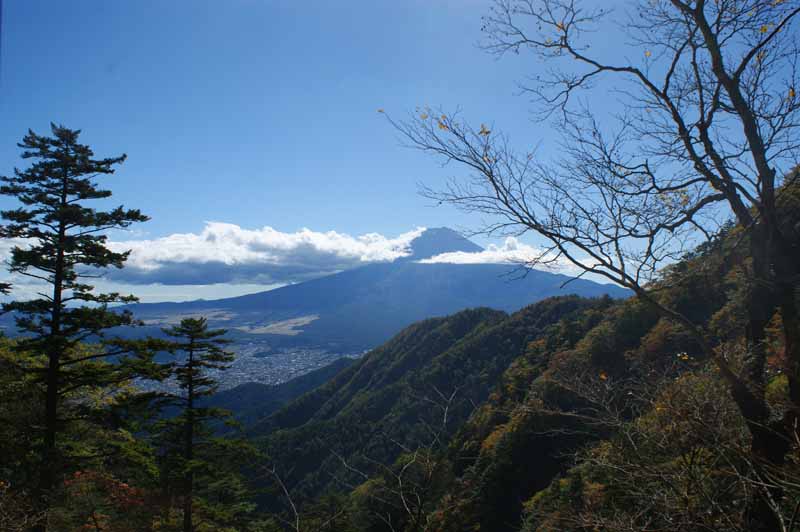Like this post? Help us by sharing it!
As I write this, the rains of June pelt my Tokyo apartment window. This time of the year is my favourite time for a jog. The June rains always act as a reminder to me that I have to get into shape and ready for the thrilling summer ahead – leading hiking tours in Japan is just around the corner.
One such trip I lead is Inside Japan Tours’ very own Historic Mountain Trails – a beautifully balanced, two-week tour taking in the elegant glitz and swagger of Tokyo; the cultural gems and gardens of Kyoto; walks through inland farming villages, and bagging two of the highest peaks in Japan: rugged Mount Hotaka and the ever-iconic Mount Fuji, Queen of Japanese mountains.
This is by far my favourite tour to lead – I have always loved the Japanese countryside, especially exploring the peaks that extend throughout the Japan’s archipelago, comprising 70% of its surface area. Rugged granite towers, sweeping volcanoes and verdant peaks all offer some of the finest hiking you’ll find anywhere. If the editor of Wanderlust Magazine, Phoebe Smith, who scaled some of these mountains with me a couple of summers ago, was ‘dumbstruck’ by the beauty of the Japanese Alps, you know there is something special to discover on this tour!
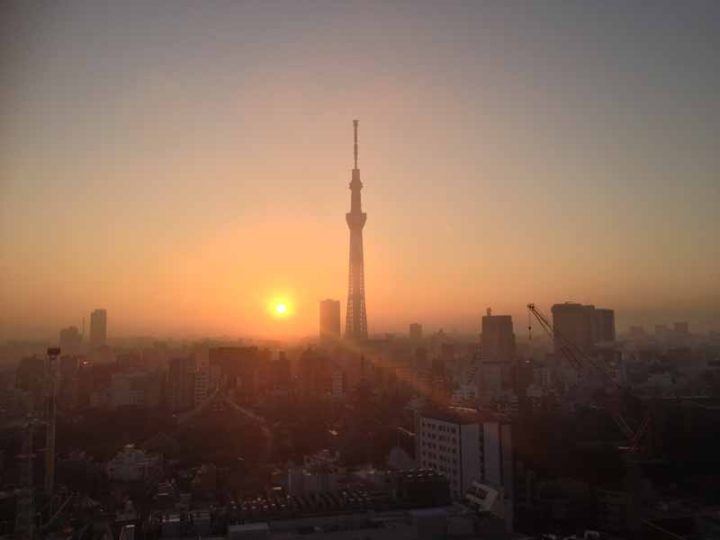
Our route starts out with a hit of Tokyo – enough to fuel inject the most jetlagged head! The city is simply THE BEST in the world – OK, I’m biased as a second-hand local, but I defy anyone to disagree. It’s then a bullet train and local ride to Nagano Prefecture, where green summer paddies spread their patchwork carpets through former ancient fiefdoms.
Following in the footsteps of samurai
Our first experience out of the city is a wander along the old Nakasendo samurai highway, on which we follow in the footsteps of daimyo lords and their samurai retinue, shogunate officials, pilgrims, and merchants. We follow the undulating trail through forests, rice paddies and hamlets. Unlike in the capital, people are few and far between here, but we always happen across the occasional friendly canine or chatty farmer.
This warm-up walk becomes a little on the heated side given the Mediterranean summer temperatures, so the immediate natural ice blast on offer at Otaki (Male Falls) is the best way to cool down. Immortalized in Miyamoto Musashi, a samurai tale, this waterfall is where the swordsman protagonist cools his amorous desires, his lover respectively standing under the nearby Metaki (Female Falls). Both successfully quell their raging passions and these days my group members and myself quell the heat of summer. Maybe no Niagara or Iguazu – this mid-hike stop off is nonetheless a fantastic break. To stand, fully clothed (after emptying pockets!) under the pristine icy water, releases me from the inevitable grip of city life, and is up there among the personal highlights of this tour. It is also a carefree gesture that my fellow travellers enjoy indulging in – a release of stress and a sign that they are truly and deeply on holiday!
Summiting Mount Hotaka
However, nothing quite matches the feeling of elation, pride and (as a mountain leader) relief on reaching the Hotaka mountain hut, high in the Japanese Alps, on day five of the tour. Rising out of the Asuza river valley, the trail is one requiring strength, humility, consideration, mettle, confidence and concentration. We head up out of the tree line to then crampon across a huge expanse of snowfield, until the ultimate challenge of the day – scrambling up the ridgeline of Zeitengrad, where an inevitable sense of teamwork, mutual support and courage gets people to the warm comforts of the precariously nestled Hotaka Sanso Hut, at a pinch under 3000 metres.
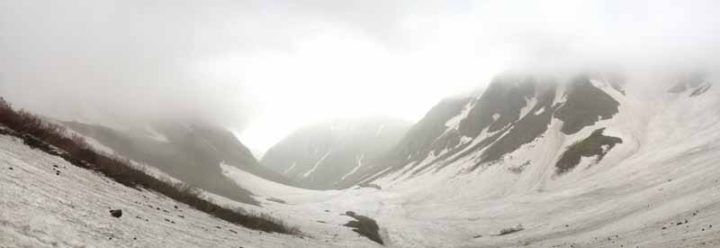
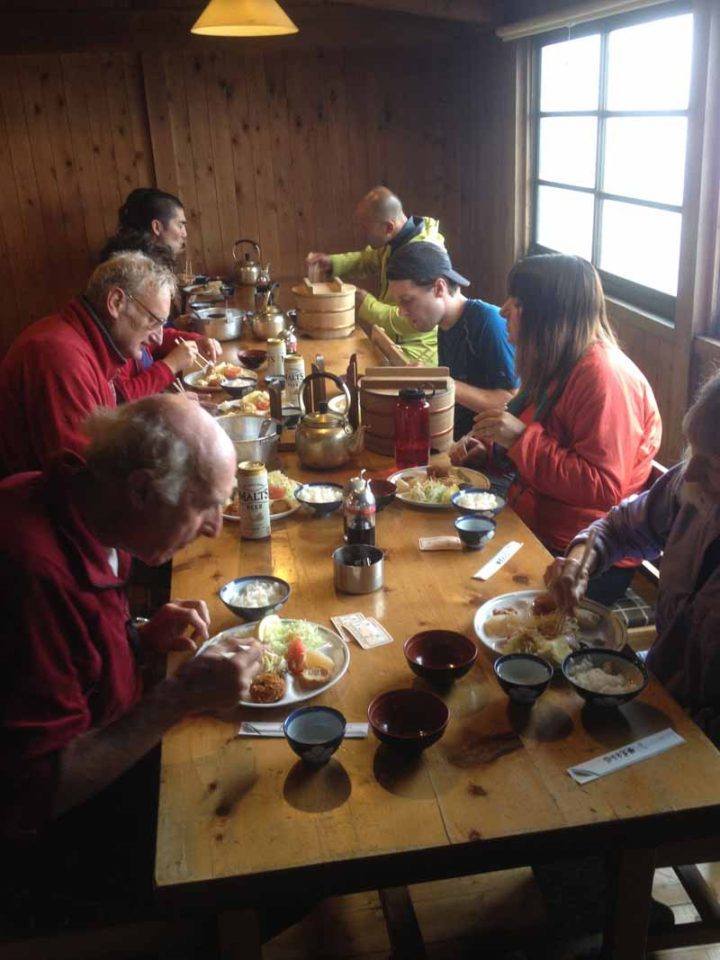
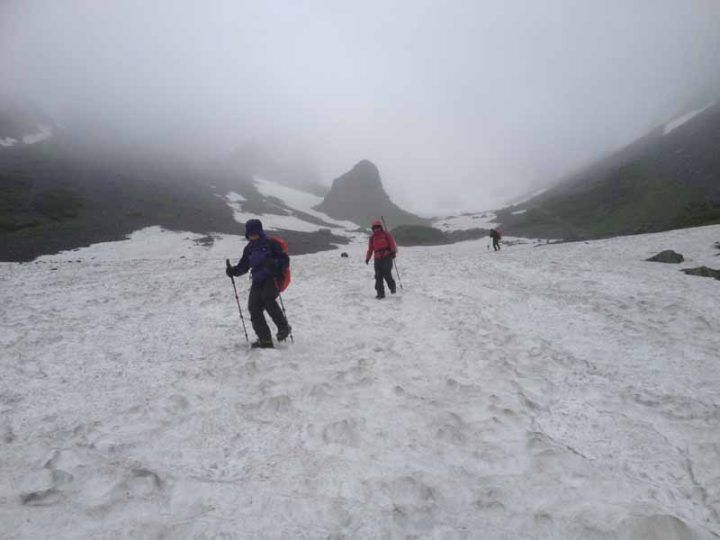
In a single day, we have ascended 1500 m. Everyone, including myself, has had to push themselves – some far more than they ever have before. Hence, when everyone has reached the hut, shaken hands, embraced and patted backs, opening that lodge door is the most comforting of feelings – a log stove burns in the common room area, the smell of a wonderfully-prepared Japanese mountain meal wafts through the air. Everyone is glowing with a sense of achievement, and even though some don’t attempt the summit with me (a further hour on from the hut), everyone is satisfied with their lot. It is this moment that fills me with the most satisfaction of any of the tours I run. The sense of being part of a team, out in the wilds, where a single mist can isolate and strip the most arrogant individual down to a humble soul, is a truly special feeling. “The mountain maketh deep musings”, as a famous Alpinist once wrote.
Having said that, the Hotaka Hut, for all its cozy hospitality, is not quite my favourite accommodation of the trip. That accolade goes to the earthy ryokan in the Kiso Valley, aptly named Fuki no Mori (“Misty Forest”). With the same alpine timber finish, this ryokan exudes an organic warmth – peaceful, light, spacious, with wonderful rotenburo (outdoor spring bath). The only crime with this accommodation is that we only have one night here, as major mountain hiking awaits us the following day!
Scaling Mount Fuji
On a hiking tour, sometimes simply “refueling” is the best way to describe mealtimes. Nowhere do I wolf down a hot meal quite as voraciously as the Japanese curry dinner up high on Mount Fuji. Plastic spoons, paper cups – who cares? When you have been pushed on Fuji, any meal there seems like a wonderful dining experience – the body needs that food badly and is more than satisfied, whatever the taste. With that said, when it comes to a favourite eatery on the tour, we have to descend back to ground level.
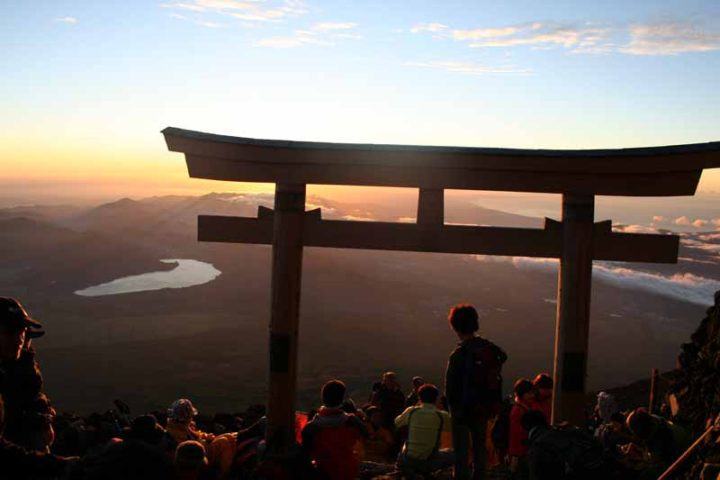
Fueling up
My favourite restaurant on Historic Mountain Trails comes at the very end of the tour, before our final farewell. Shinjuku’s neon-soaked streets are home to hundreds of great restaurants, the large majority of which fit in well with the feel of the place: brash yet somehow down-to-earth, gritty and infused with energy. Torien is one izakaya pub that fits perfectly into the railway track side-street culture that the area is famous for.
Patrons scream out orders from menus hung on the restaurant walls. The staff are constantly in on the act too – controlledly calling out to coworkers and customers. The endless clank of beer glasses and cheery shouts of “kanpai” tells it all really – this is a place that friends and regulars come to have a bloody good time.
And so, after two weeks of adventure, I feel it only fitting that the group of IJT adventurers that have blessed me with their enthusiasm, generosity, trust, patience and team spirit should be sat around a table in this restaurant as friends, having shared a very unique experience that has allowed them to really feel Japan in so many ways. As dish after dish is rolled out, tapas-style, sake after beer after sake is knocked back, the conversations inevitably turn to personal struggles and triumphs, inspirational moments and the inevitable complaint of having to “sort the photos out when we get home”.
Historic Mountain Trails starts and ends on the plain, but the heights of joy, endeavour and self-fulfillment attained during the two weeks are what, I believe, people take home from this tour.
Visit our website to find out more about Historic Mountain Trails, or book your place on the tour.


